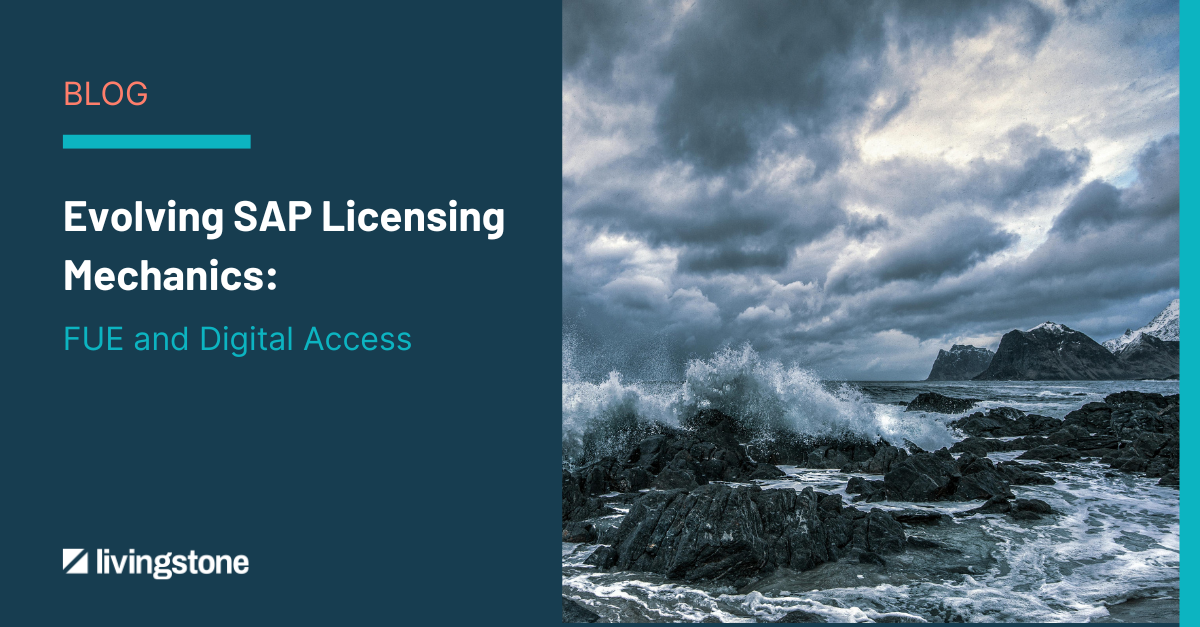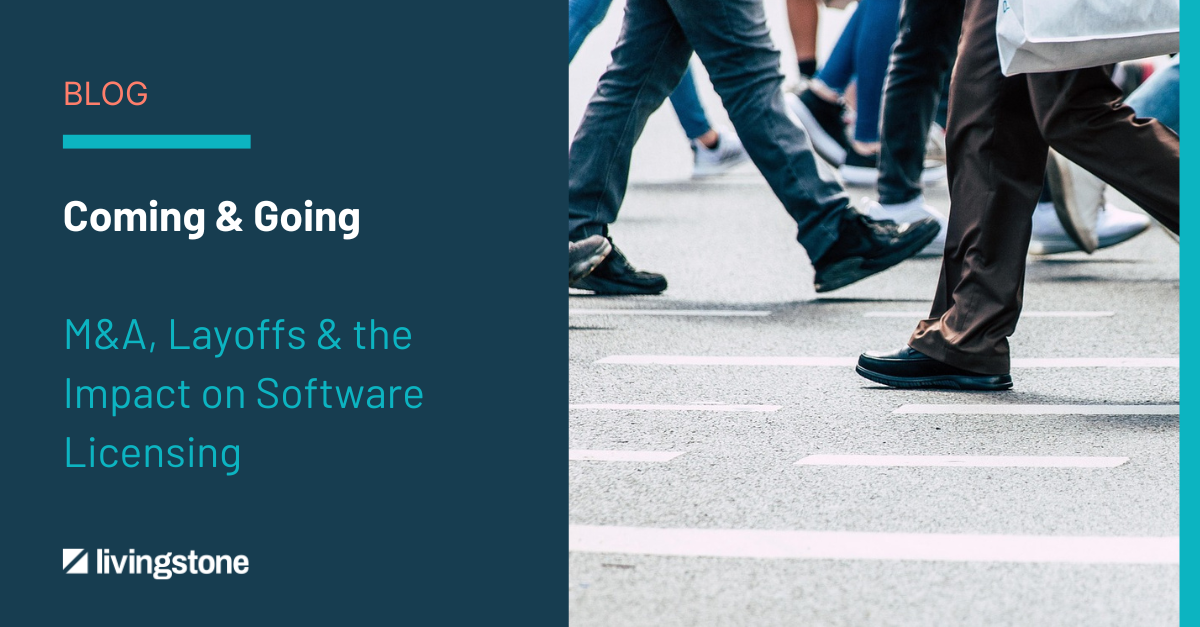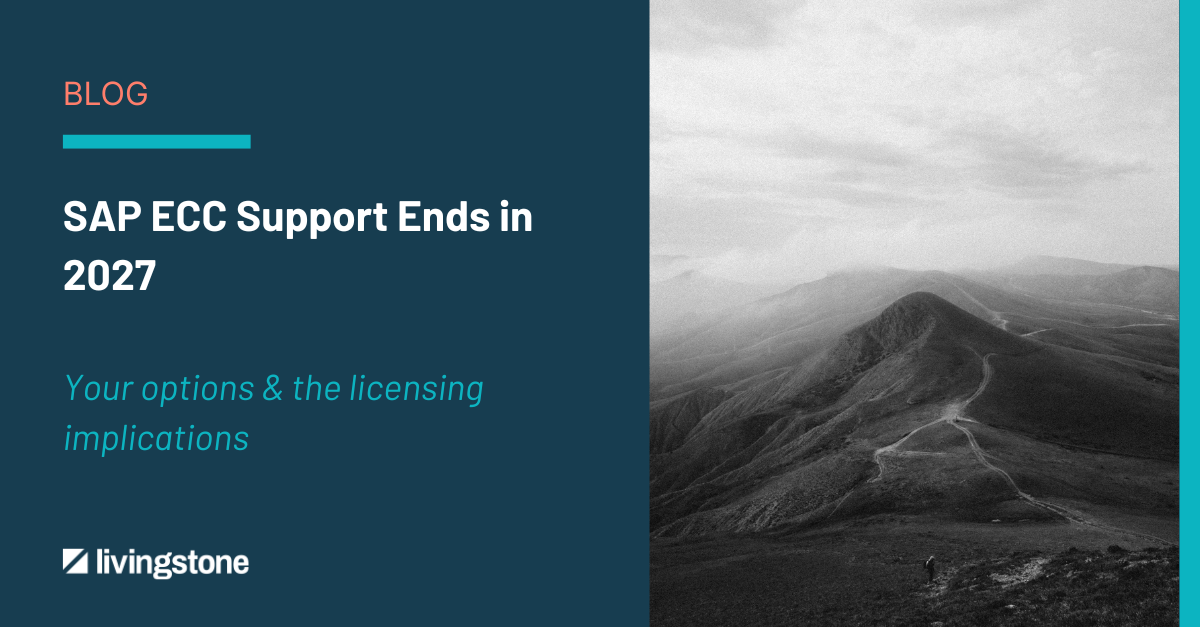S/4HANA promises a sleek, streamlined SAP future. But to get there can be a licensing minefield.
We’ve seen it all: inflated costs, surprise audits, compliance issues, and unsuitable long-term contracts. Before you start migrating, here are the key questions to ask, along with how Livingstone can help you steer clear of trouble.
Do you know where you stand with your ECC licensing?
Why it matters:
You can’t plan your future if you don’t understand your present. We often find organizations don’t have full visibility of what they’re licensed for, what’s deployed, or how much shelfware is sitting around collecting digital dust.
Common trap:
SAP’s view of your license inventory may not match reality. User types can drift, roles change, and underused named user licenses quietly stack up. If you don’t reconcile usage against entitlements, you risk paying for users or products you don’t need. Or worse, facing compliance issues.
How Livingstone helps:
We give you the full picture with a licensing position assessment (ELP), highlighting gaps, inefficiencies, and risks so you can negotiate from a position of strength.
Are you ready for a full contract conversion?
Why it matters:
SAP no longer offers the “product conversion” route. That means you can’t just repurpose parts of your old licensing estate. It’s full contract migration or bust. That decision comes with big financial and contractual implications.
Common trap:
Many still assume they can convert selectively. Not anymore. And each year that passes, SAP offers less credit for your existing licenses. This is why so many organizations are now being nudged toward RISE or GROW with SAP, even if it doesn’t fully align with their goals.
How Livingstone helps:
We model the cost and risk of your full contract conversion, taking into account your future needs, not just SAP’s roadmap. We’ll help you make a business-first decision, not just a vendor-led one.
Have you looked at your exposure to Digital Access (aka indirect usage)?
Why it matters:
S/4HANA puts the spotlight back on Digital Access, SAP’s metric for licensing indirect usage (like third-party systems pushing data into SAP). If you're not prepared, this can trip you up post-migration.
Common trap:
People assume named user licenses cover everything. They don’t. If Salesforce automatically generates a PO in SAP? That’s indirect usage and it could be a licensable event.
How Livingstone helps:
We map out your integrations, assess exposure, and help you build a mitigation strategy that keeps you compliant without overpaying.
What’s really included in RISE with SAP?
Why it matters:
RISE bundles infrastructure, software, and services into a single subscription. It sounds like a simple solution, and in some ways it is. But there’s fine print. RISE isn’t a one-size-fits-all, and it’s definitely not all-inclusive.
Common trap:
RISE doesn’t cover everything. Custom code remediation, third-party integrations, and specific licensing conditions may fall outside the bundle. And while SAP positions RISE as flexible, the reality is often more lock-in, less room to negotiate, and fewer credits over time for legacy licenses.
How Livingstone helps:
We unpack what’s in (and what’s not) with RISE. Then we help you decide whether it fits your environment, or if a tailored approach will serve you better long-term.
Have you benchmarked what SAP is offering?
Why it matters:
SAP’s pricing is famously… negotiable. Discounts vary wildly by region, timing, deal size, and even the salesperson’s quota. Without data, you're negotiating in the dark.
Common trap:
Don’t fall for “this is our best available price”. What’s best for SAP might not be best for you. The real question is: does it hold up to market benchmarks?
How Livingstone helps:
We bring decades of SAP commercial data to the table, so you know exactly what you should be paying and where to push back.
Do you have the right team to lead the negotiation?
Why it matters:
S/4HANA negotiations aren’t just about legal terms; they’re commercial chess games. SAP’s sales teams know the board. Most internal teams don’t play often enough to match them.
Common trap:
SAP will guide the conversation toward their goals unless you take control. Without strong counterpoints, you may agree to terms that tie you up for years.
How Livingstone helps:
We act as your expert negotiators, whether that’s behind the scenes or on the front lines. You get strategy, support, and someone who knows how to say “no” with confidence.
Final Thought:
Migrating to S/4HANA is a huge move and licensing can make or break the business case. The sooner you start preparing, the better your commercial outcome. Livingstone gives you the clarity, control, and confidence to do it right.
Need S/4HANA licensing help?

About the Author
Marco Claassen is a Managing SAP Licensing Consultant at Livingstone. With well over 20 years of SAP licensing expertise under his belt, his role is to support customers get the best value out of their SAP estate by evaluating their current contracts and conditions and help negotiate better ones. His specialities include contract optimization, negotiations, compliance, deal constructions, legal aspects and impacts of contracts, terms & conditions, delivery models, engines & metrics, contractual mergers & acquisitions, pricing models, contract reconfiguration. Connect with Marco on LinkedIn




